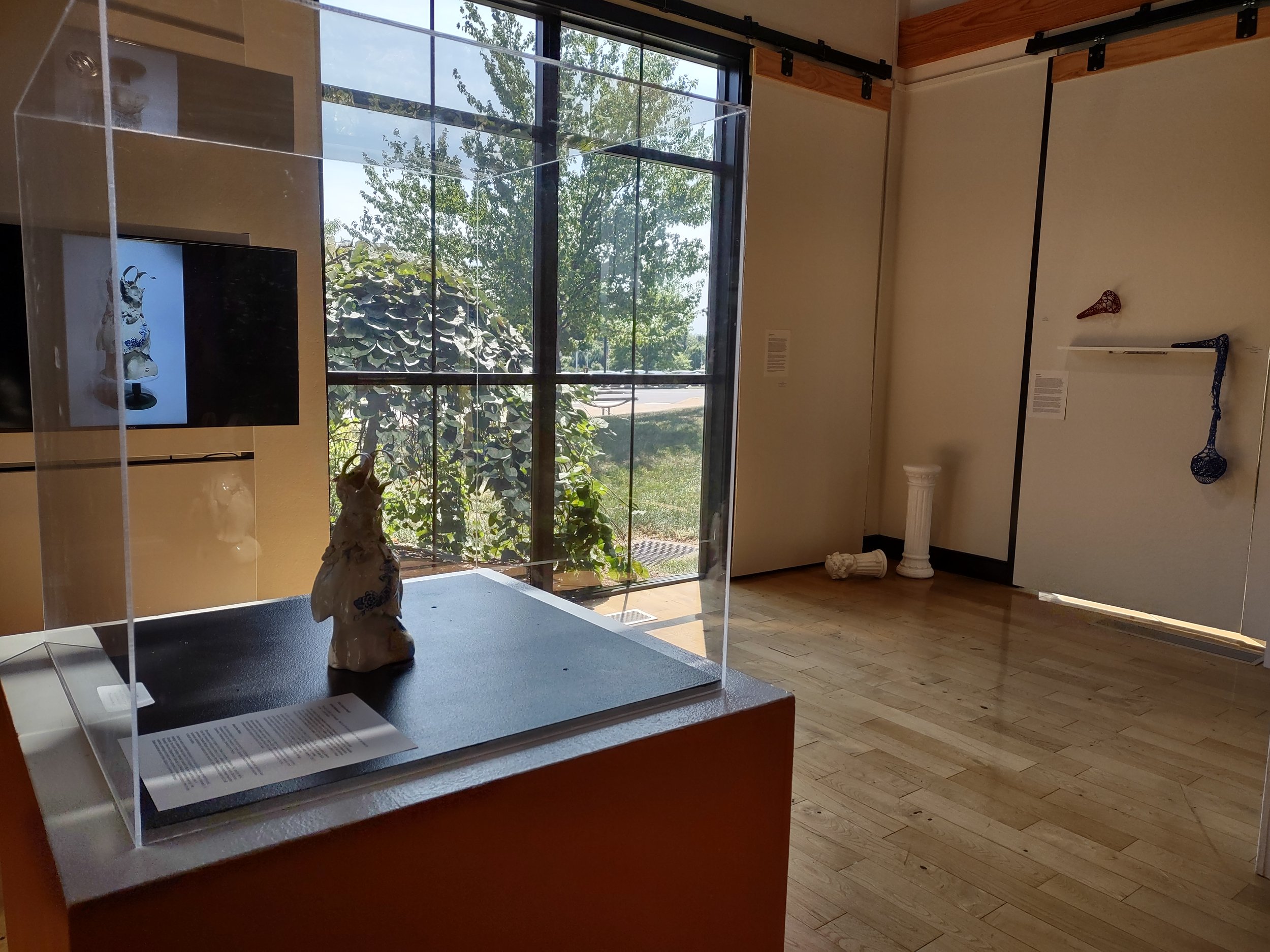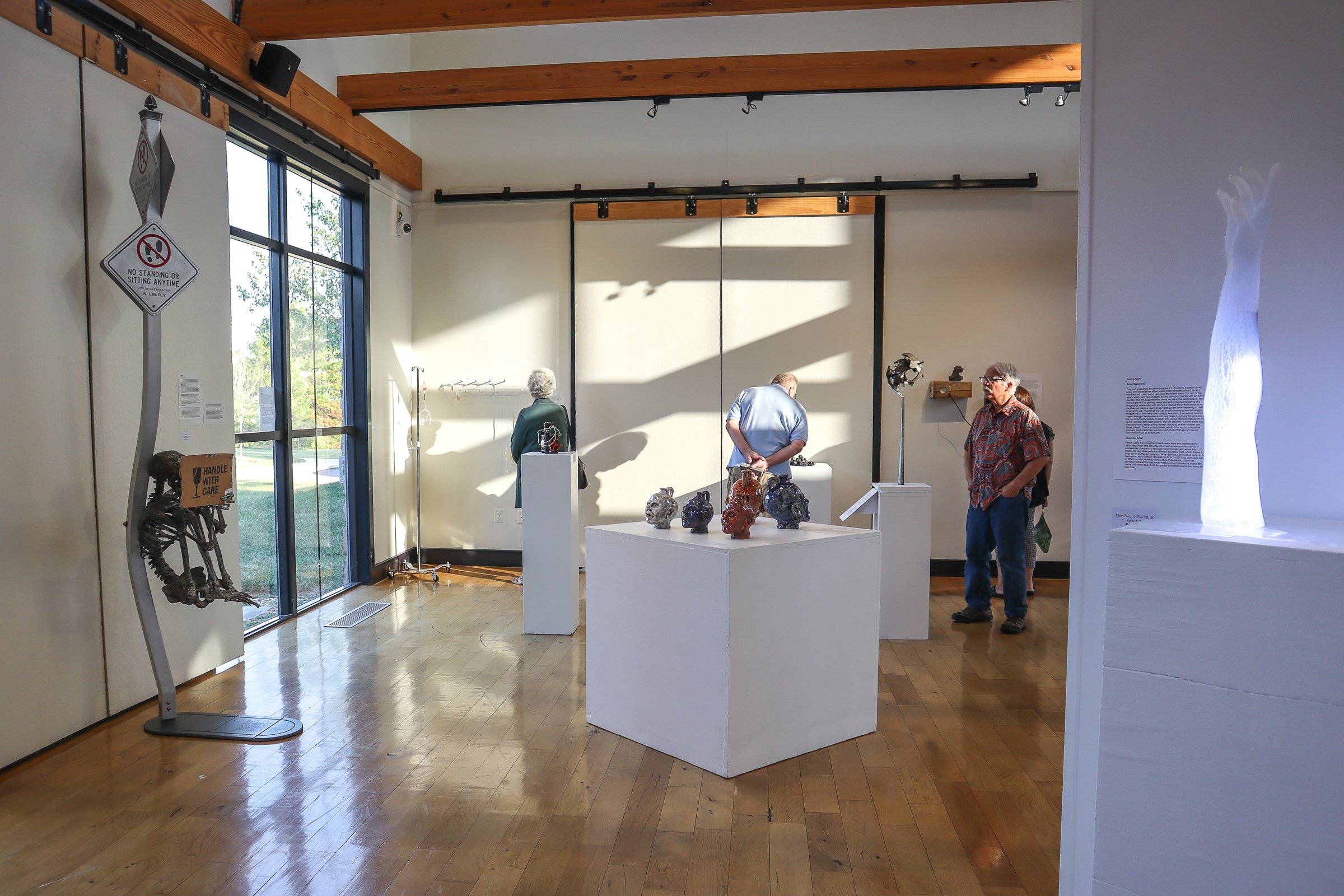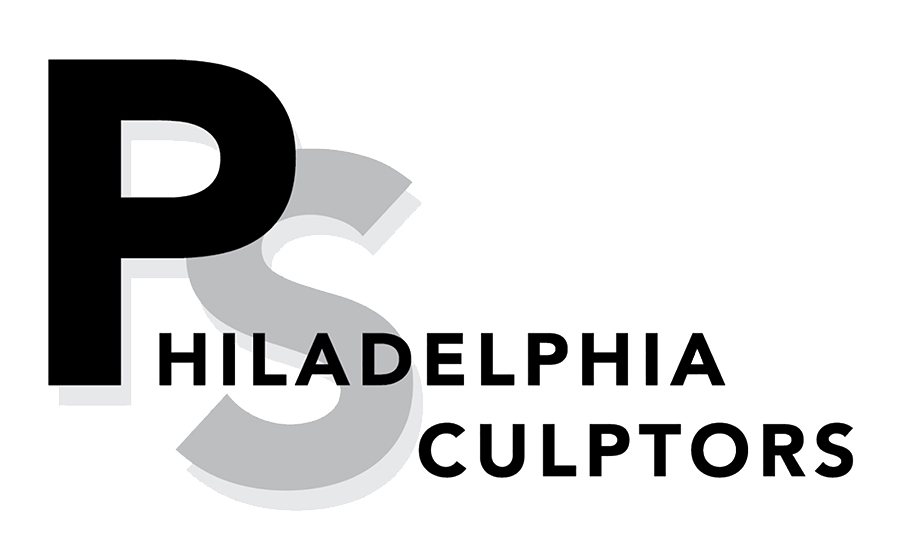Pushing Buttons
August 28 – October 7, 2024
Opening Reception: Friday, September 13, 2024
Montgomery County Community College
Blue Bell, PA
Philadelphia Sculptors (PS) and Tri-State Sculptors (TSS) revisit their past successful collaborative exhibitions with Pushing Buttons, their new exhibition at the Blue Bell Campus Art Gallery at Montgomery County Community College in Blue Bell, PA. Using wit and insight 26 artists (13 from each group) put their imprints on many of the complex issues facing the world today, perhaps pushing quite a few buttons in the process. The exhibition will run from August 28 through October 7, 2024
With so many hot buttons to choose from, artists span the range from literal to figurative in their approaches, offering both strong statements and strong artworks. Some of the more literal-minded nonetheless create nuanced works that transcend the physical action represented. Jake Beckman (PS) creates a “machine” with an amusing amorphous button that when activated makes a silly sound, seemingly appearing almost animate without an obvious purpose, yet representing the starting point for an inquiry into meaning. Kathleen Studebaker’s (PS) “fantastical gadgets” include “buttons” in their bases, but also without an obvious function, they invite viewers to use their own imaginations as to what these mechanisms are for. Kim Knauer (PS) assembles repurposed items into “useless machines” that can perform on a conceptual level by “telling stories about the past and possible futures. “
Kathleen Studebaker
Kasia Ozga
Brynn Hurlstone’s (PS) interactive works welcome viewers to “push” her glass and metal “buttons,” challenging the concepts of fragility and boundaries. Mary E. Carlisle (TSS) uses clay to recreate steel gears with industrial tools and then hand finishes them, referencing industrial workers replaced by technology. Nicole Weldy’s artworks (TSS) reference lacemaking as she fuses handmade techniques with three- dimensional printing to explore how today’s craftsmanship inhabits a complex place between the hand and the machine.
Kasia Ozga’s (TSS) works are made through, with, and about the act of pushing. She employs tactile fingerprints, mangled arms cast without a mother mold, and impressions of her postpartum body in clay, to ask what happens to bodies that simultaneously withstand and exert pressure from and on their environments. Holly Smith’s (PS) painted wood figures appear to both push apart and come back together, representing the balancing act of many relationships.
Other artists take a larger view and use their art to expose and push back against political, social and environmental injustices, abuse and inequities. Not surprisingly, the political environment propels a number of artists to find visual forms to express their convictions. Andi Steele (TSS) presents an unravelling American flag that graphically shows the divisiveness taking place in the US. Virginia Maksymowicz (PS) portrays Donald Trump as a Roman emperor unceremoniously toppled from his pedestal. Geoff Calabrese’s (TSS) modified traditional southern ugly face jugs are perfect stand-ins for unnamed loudmouth manipulative politicians. While not specifically referring to current politics, Mia Fabrizio (PS) addresses the concept of the traditionally male seat of power, making chairs nonfunctional in order to subvert both their function and their symbolism.
Geoff Calabrese
Adam Adcock
The degradation of the social structure is a strong motivator for some of the artists. Briar Coleman’s (TSS) vintage-looking farm machine-like structure appears both threatening and dysfunctional, challenging the notions of the agricultural (and other) premises of our society. Adam Adcock (TSS) questions the concept of “home” and how the values associated with creating quality of life and economic prosperity have dark undersides. Kevin Vanek (TSS) presents skeleton forms to represent the commonality of all human beings as our world continues down a path of self-destruction that will affect not just the marginalized, but everyone else as well. Keith Bryant (TSS) bemoans the thin skin and ubiquitous sense of personal affront felt by so many people, resulting in the perceptions that so many people feel they are treated as targets.
Threats to the environment galvanize other artists. George Lorio (PS) is passionate about ecological destruction and the loss of woodlands and creates his “tree” from shredded and compressed wood pellets. In Jim Gallucci’s (TSS) large outdoor coated aluminum arch of oak leaf shapes encourages the viewer to walk under it to appreciate what is being lost. Leslie Kaufman’s (PS) tree of PVC pipe and plastic drives home how the environment is being abused as nature is replaced by fossil fuel-derived synthetics. Marie Weaver (PS) uses ceramics, plastic netting and fishhooks to create an angry guardian figure to channel supernatural intervention that could attempt to fix human-caused environmental disasters.
The personal can blend into the political, as demonstrated by artists who begin their investigations with the body. Patrick Cabry (PS) presents a radiant arm with a hand reaching out – to push a button inflicting self-harm, or perhaps to ask for help in its battle with body dysmorphia and society’s pressures on women to be thin. Constance McBride’s (PS) ceramic female figure focuses on women’s lack of control over their bodies throughout their lives, trapped by decisions made predominantly by men. For Maggie Genoble (TSS) pushback against rigid notions of gender and sexuality mixes with alarm over the intrusion of technology into human life, taking the form of medical apparatuses that suggest disturbing relationships between machine parts and body parts. Eliot Joanna Angell (TSS) presents a delicate ceramic female figure clothed in a floral patterned dress to acknowledge the many contradictory forces affecting women – the desire to be beautiful and feminine, yet the knowledge of oppressive labor forces that create women’s apparel.
Maggie Genoble
Simone Spicer
While most of the buttons being pushed in this exhibition skew into negative territories, artists still find reasons to hope. Leah Foushee Waller (TSS) creates giant buttons to honor strong mothers throughout time whose stories and memories encourage others to pursue their journeys with grace and fortitude. And while Simone Spicer (PS) has worked with dark themes of social and environmental injustices, her uplifting cardboard figures not only transcend their origins, but reflect how is art can be used to connect with others through shared experiences and positive emotions on the journey to collective healing.
Installation images





























































![Middle right reception].jpg](https://images.squarespace-cdn.com/content/v1/5c796cee94d71aca9e81fb37/1729561821819-L613C5OFX6XRI5XH7ZX7/Middle+right+reception%5D.jpg)
















